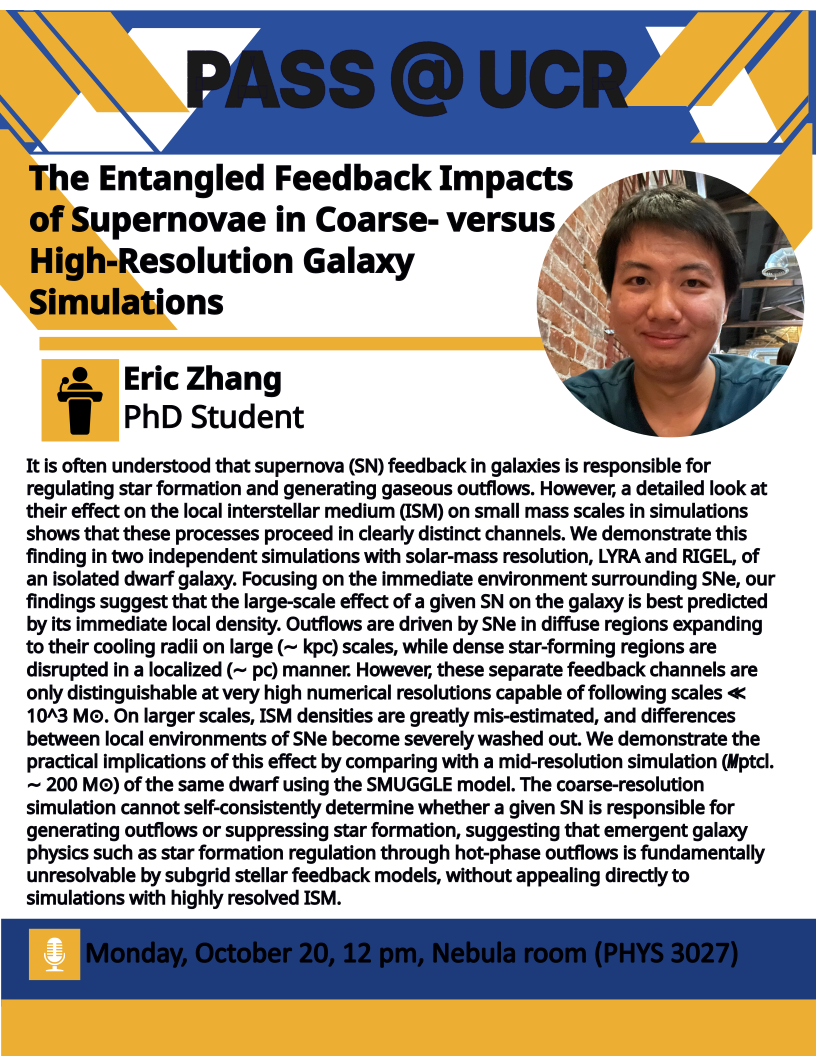Eric Zhang, PhD Student
Monday, 12:00 pm, Conference Room (PHYS 3051)
The Entangled Feedback Impacts of Supernovae in Coarse- versus High-Resolution Galaxy Simulations
It is often understood that supernova (SN) feedback in galaxies is responsible for regulating star formation and generating gaseous outflows. However, a detailed look at their effect on the local interstellar medium (ISM) on small mass scales in simulations shows that these processes proceed in clearly distinct channels. We demonstrate this finding in two independent simulations with solar-mass resolution, LYRA and RIGEL, of an isolated dwarf galaxy. Focusing on the immediate environment surrounding SNe, our findings suggest that the large-scale effect of a given SN on the galaxy is best predicted by its immediate local density. Outflows are driven by SNe in diffuse regions expanding to their cooling radii on large (∼ kpc) scales, while dense star-forming regions are disrupted in a localized (∼ pc) manner. However, these separate feedback channels are only distinguishable at very high numerical resolutions capable of following scales ≪ 10^3 M⊙. On larger scales, ISM densities are greatly mis-estimated, and differences between local environments of SNe become severely washed out. We demonstrate the practical implications of this effect by comparing with a mid-resolution simulation (𝑀ptcl. ∼ 200 M⊙) of the same dwarf using the SMUGGLE model. The coarse-resolution simulation cannot self-consistently determine whether a given SN is responsible for generating outflows or suppressing star formation, suggesting that emergent galaxy physics such as star formation regulation through hot-phase outflows is fundamentally unresolvable by subgrid stellar feedback models, without appealing directly to simulations with highly resolved ISM.

The video recording of this talk is available at link .
